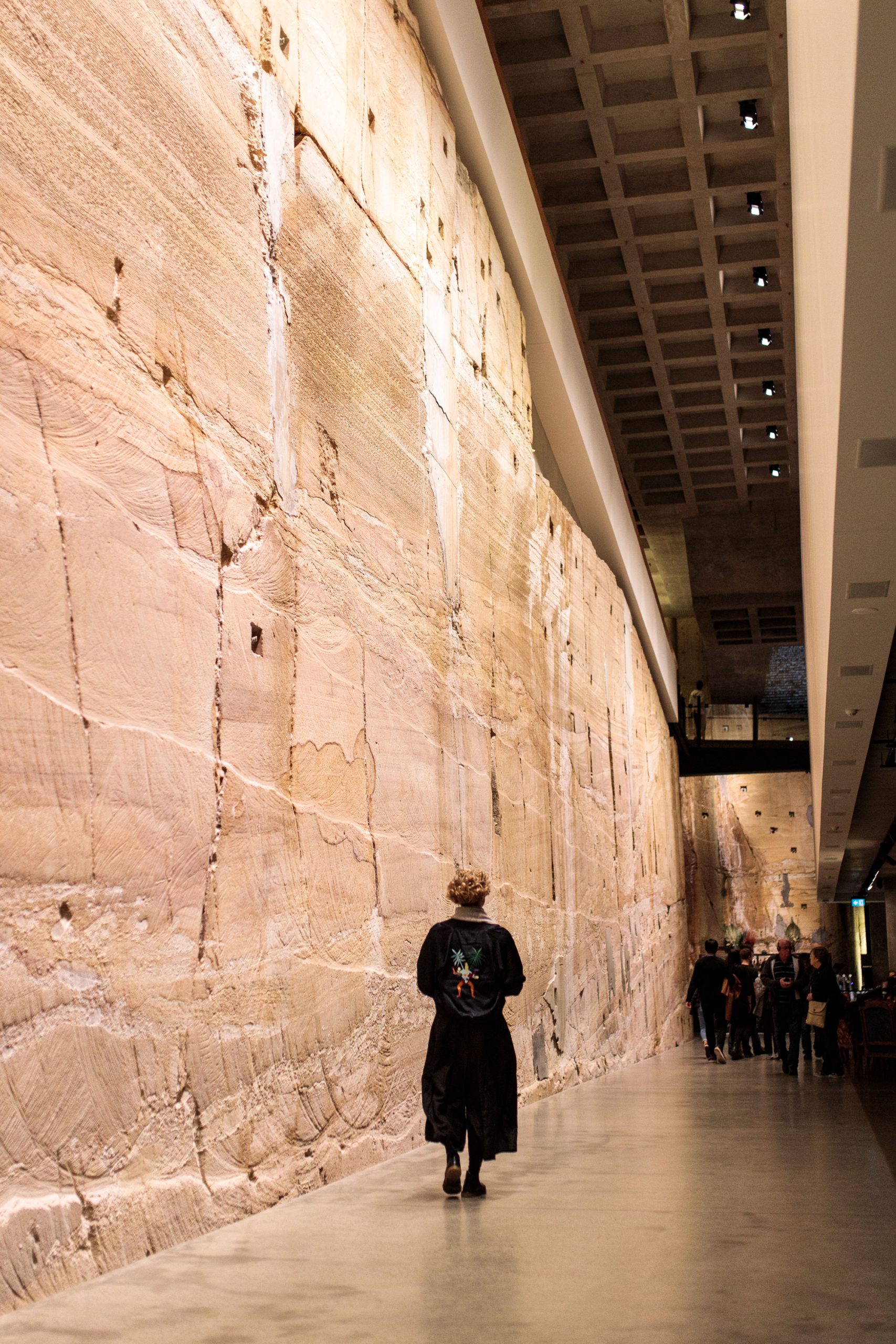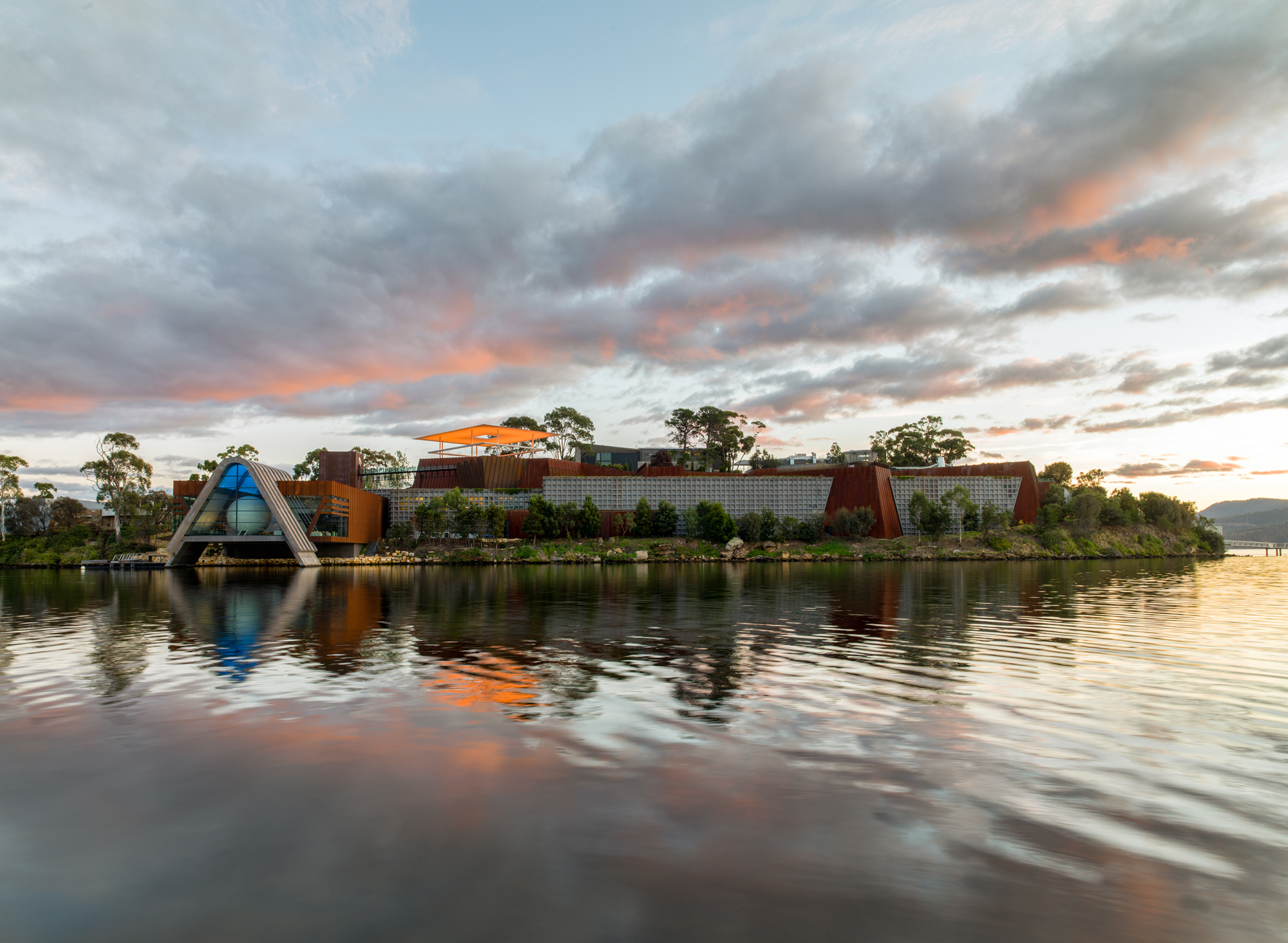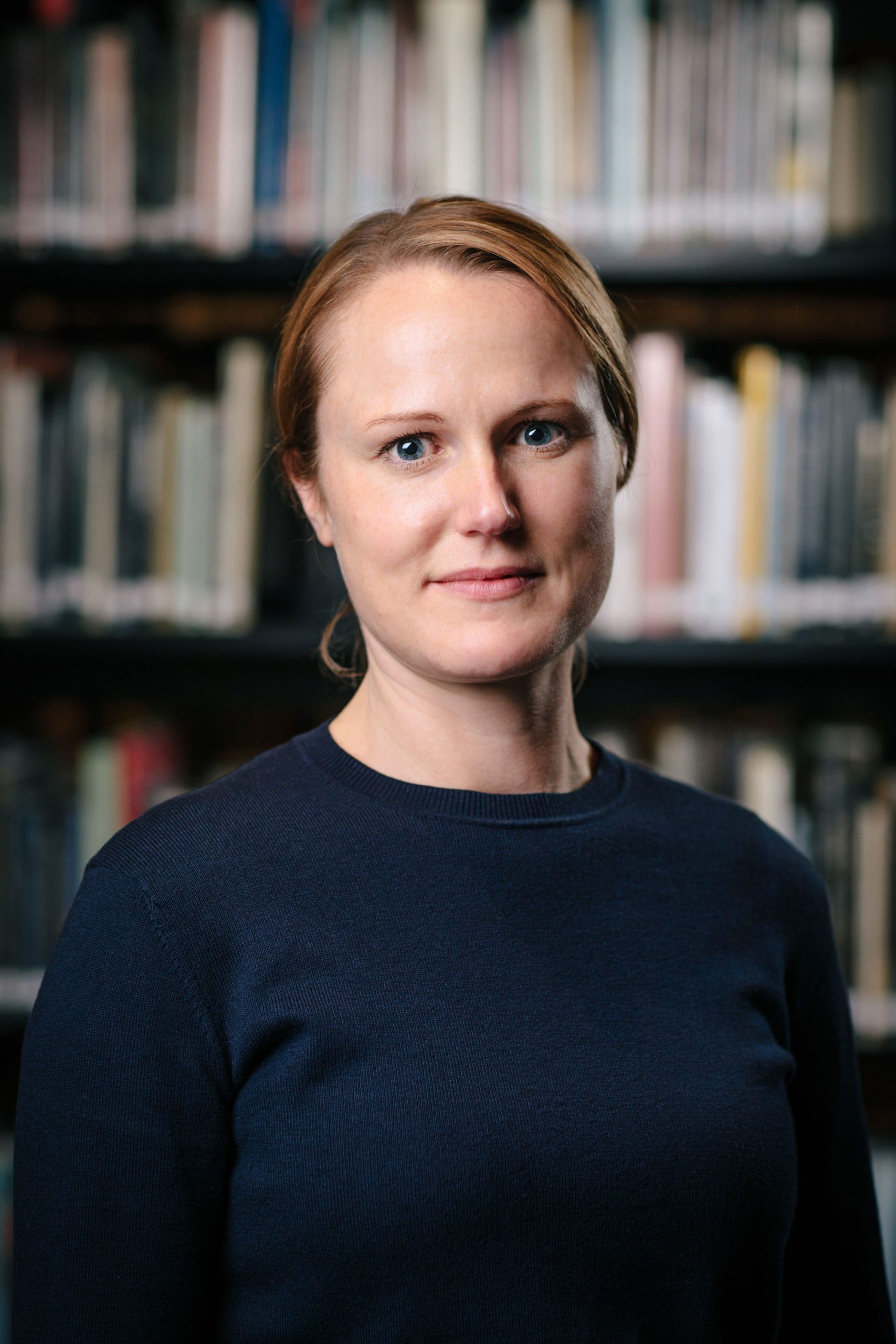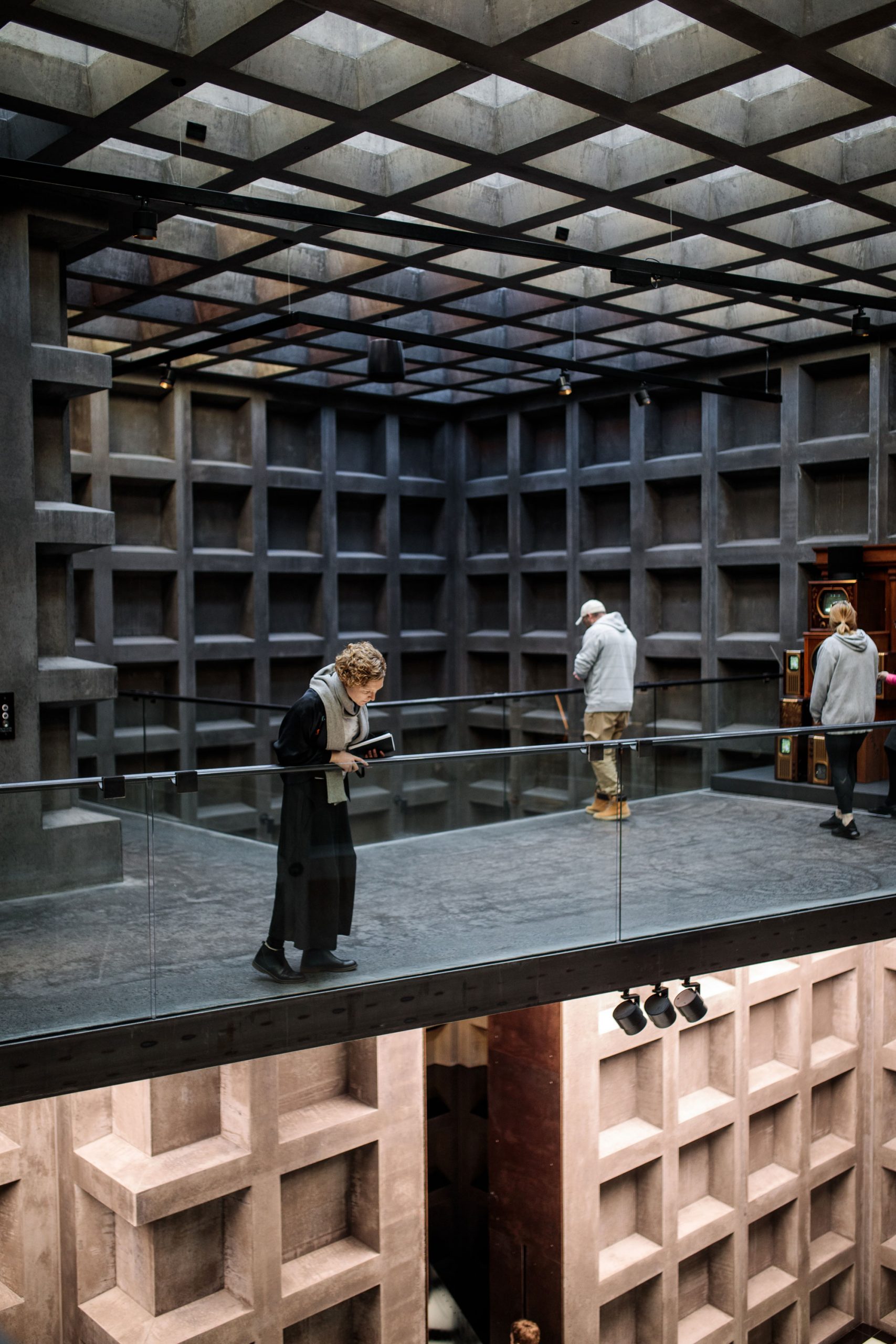Daring to experiment with uncertainty at Mona
Mona has captured the hearts of many – financial freedom, combined with a willingness to take risks, has made this museum a genuinely experimental project, rejecting the unadventurous and embracing the new. Emma McRae delves into the museum’s history and how it has transformed the way Tasmanians, and Australians, view the island state.
“When David Walsh said all art is about sex and death, what he meant was that art is either about showing off or leaving a legacy,” says Jane Clark, senior research curator at Mona (Museum of Old and New Art). But sex and death alone doesn’t account for the incredible success Mona has had, attracting over three million people to a museum on the edge of Tasmania in only eight years. Mona’s appeal includes a distinctive tone, multiple voices, plus a willingness to take risks and interrogate challenging ideas.


Combined with the freedom of financial independence, this approach has produced a genuinely experimental institution that attracts a broad range of people, many of whom wouldn’t usually set foot inside a museum. They come for the irreverence and the sensationalism, sure, and also for the architecture, the art and the wine. But most of all, they come for the experience.
“Mona is an immersive experience,” says Robbie Brammall, Mona’s director of marketing and communications. “That terminology is quite in vogue now, but David was doing that from the start, instinctively.” From the moment you board the giant camouflage ferry on the River Derwent, everything works together to create an experience. “There are no signs anywhere, you’re confused and disoriented and slightly frustrated,” Robbie says. “You descend five storeys into the abyss and the first thing you see is a giant bar that has Australia’s earliest happy hour and a beer vending machine. You get an experience when you come to Mona. I think that’s what we pioneered and what makes us different.”




Since opening in 2011, Mona has become a major tourist attraction and a significant employer in Tasmania, helping reinvigorate the economy and, many argue, the way Tasmanians, and Australians more generally, view the island state. “It is legitimising, encouraging and facilitating what is already present in Tasmania,” says Elizabeth Pearce, Mona co-director. “I don’t know anywhere else that has such inherent contradictions. Tasmania is a place of extremes; it’s ‘both/and’. Mona is ‘both/and’ as well, which encourages and legitimises that position as something that can be inhabited confidently and happily.”
Robbie goes further. “The entire personality of the state has changed: there’s a confidence and irreverence, a sense of humour and tone that comes from being a bit more comfortable in your own shoes. There’s now an expectation that you do something different, something you can’t get away with on the mainland.” He says many former employees of Mona are now doing just that. “I think the lesson you get from Mona is: if you do something well and different, don’t box-tick and try to pander to the audience. As much as ‘the Mona effect’ is an economic legacy, I think the more valuable legacy is a cultural one.”
The secret to the museum’s success with the audience – over 400,000 visitors a year, 70 percent coming from outside of Tasmania – “is that we don’t care too much about our audience,” Elizabeth said at a talk in 2016. The museum’s brand relies on honesty, admitting they sometimes get things wrong, and not talking down to people. “We established a strategy that stands true today,” Elizabeth said. “We should describe the events and products as we would to our most intelligent friend.” Mona, Robbie says, is not trying to tell anyone what to think. “We present things for discussion but don’t have a pointed social conscience or a political direction.” This ‘say it like it is’ approach, combined with the multitude of opinions available on the handheld O device, denies any authoritative voice and invites visitors to have and share their own opinions of the art, the exhibitions and the museum. “Mona is for everyone,” says Robbie. “That’s why there are no labels on the work.”


Like Mona founder, professional gambler and art collector David Walsh, Elizabeth and Robbie are both born-and-bred Tasmanians. Robbie left for 18 years, working as a creative director for companies including DDB and Saatchi & Saatchi, in Melbourne and Auckland, before returning to Hobart in 2016 to work for Mona. Elizabeth became part of the core Mona team prior to opening, when a friend introduced her to David in a Hobart bar. During an argument about postcolonial literature, she says, “I just happened to sass the right person at the right time.” Jane was also part of that core team: David poached her from her role as director of paintings and deputy chairman at Sotheby’s Australia.
These key staff members, with their professional longevity and understanding of the Tasmanian context, all agree that, as Mona has matured, it has become more embedded within, and consequently more accountable to, the local community. Having started with a team of around ten, Mona now employs approximately 2900 people during the peak Dark Mofo period. “That is a big organisation with a big responsibility,” says Robbie. “We’ve got a lot of employees that rely on our success.”
Aware of Mona’s position as a significant cog in the Tasmanian economy, David is now planning a 172-room, 5-star hotel (“Gloriously impractical,” says Robbie), possibly including a casino, to support the operations of the museum. If the museum’s core principle is ‘be yourself’, everyone I spoke to was aware that it’s much easier to be yourself when you are financially independent. “David Walsh was rich enough – and therefore free enough – to take on an enormous personal and financial risk, and to not care if it failed,” Elizabeth has said. “I mean, he cared. But he was prepared for it to fail.” Since the 1990s and the beginning of what Richard Sennett calls ‘the new capitalism’, many individuals and companies have learned to fail fast and move on. But most large museums, despite their talk of embracing failure, are public institutions and therefore publicly accountable in ways that David never has been.
At Mona, the ability to act with freedom is combined with a hedonistic appeal to have as much fun as possible, despite an uncertain future. The ability to live and act within uncertainty, says Elizabeth, is the most accurate way to conceptualise David Walsh as a person, and by extension Mona as an organisation. “His mathematical approach is reflected all the way through,” she says. “He has a very particular attitude to risk-taking and decision-making that is much less to do with meaning and death than with how to inhabit uncertainty. How to deal with risk, know what you don’t know, and place yourself in a position to get the most out of uncertainty, as opposed to trying to master it.”
In a time of overwhelming social, technological and planetary uncertainty, Mona’s ability to inquisitively and irreverently inhabit uncertainty feels liberating. Descending into the museum, as though arriving on an archaeological dig, visitors encounter objects ranging from antiquities to contemporary artworks, presenting a material history of humanity as an evolving process. As a constantly expanding structure – including tunnels signposted ‘To be continued’ – and a labyrinthine layout that can bamboozle even the staff, Mona does indeed feel both old and new.


Mary Lijnzaad, Mona Library manager, has lived through the evolution of both the museum and the collection longer than anyone else at Mona. Having started in 1999 (in the days of David’s first museum of antiquities) working one day a week to catalogue David’s extensive book collection, Mary – a trained librarian – soon found herself cataloguing also the antiquities, and then the growing collection of contemporary art. She taught herself museum cataloguing along the way and instigated, with Art Processors, a collections database that eventually became the CMS that runs the O. It wasn’t until 2006, when David started employing curators again, and also conservators, that Mary was able to shift her focus back to the library. For Mary, the mix of old and new at Mona is both liberating and inspiring. It breaks out of the dusty old museum stereotype and encourages visitors to feel that history is alive and constantly relevant. Or, as Mary put it, “Everything is contemporary.”

For local Tasmanians who are doing it tough, though, Mona is not offering the same existential respite from the present moment – despite free entry to the museum. Kate Booth, a lecturer at the University of Tasmania, was part of a recent ARC funded project studying ‘The Mona Effect’ and has written that, while there is generally good feeling towards Mona, “The high cost of food, drink and items in the gift shop, and other signs of the institution’s wealth, can act to tell visitors with lower socioeconomic and cultural capital that these places are not for them.” Culture-led regeneration projects have been shown to contribute to increases in gentrification, rising house prices, unemployment and displacement of the local population. Over the past five years, Hobart’s house prices rose faster than any other capital city in Australia. While this boom is apparently coming to an end, many people I spoke to in Hobart attribute the sudden increase in homelessness over the last few years to the growing number of Airbnb rentals that reflect increased tourism and make accommodation unavailable, or unaffordable, for locals.
There are also mixed opinions on the impact Mona has had on the local arts industry. Many locals celebrate the increased reputation Hobart has gained as a hub for creative industries, and credit Mona with boosting this recognition. Others, however, such as Scott Rankin, creative director of Big hART, and Bill Hart from the University of Tasmania’s School of Creative Arts, have noted that there was always a rich arts ecology in the state, and that the Ten Days on the Island festival, which began in 2001, must also be recognised as significant in transforming the creative reputation of Tasmania.
It’s important to remember, however, that Mona wasn’t built as part of a culture-led regeneration project. It’s a private museum created to house a private collection. It was, and still is, an experimental project that genuinely tries to subvert the idea of museums as staid institutions in order to create something new. Its economic effect on the state has been unintentional. The museum’s unusual approach has its critics, but, at the same time, it offers a point of difference on the Australian cultural landscape.
“We are hopefully providing a counterpoint in some key ways – not in every way but in some ways,” Elizabeth says. “Having a point of difference gives you an opportunity to think more about why you’re doing things the way you are.”

The idea of critical self-reflection lies at the heart of the museum. “One of the things David wanted Mona to do was make people open to ideas,” says Jane. The ethos of change, reflection and experimentation is the essence of the cultural legacy Robbie spoke of, and it continues, Elizabeth says, to guide Mona into an uncertain future. “Built into the fabric of the place is change, and letting go, and moving on to something else, and David’s completely aware of that.
We can’t lock Mona into being one particular thing – that would be a betrayal of Mona’s fundamental value of growth through learning. Ultimately,” she says, “that’s our legacy.”

Thank you, Emma, for your thoughtful words on an incredible museum – one of our favourite articles from the new Assemble Papers print issue #12. You can get your free copy from MPavilion (available all summer long) or selected stockists on our website.

























